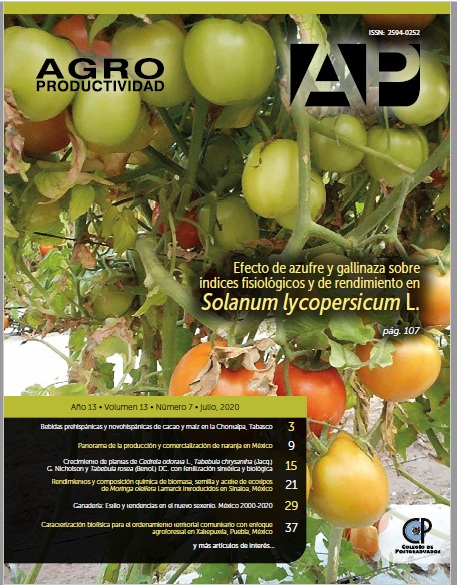Características bromatológicas y fermentativas in vitro de complementos con Enterolobium cyclocarpum (Jacq.) Griseb y cáscara de Cucurbita argyrosperma Huber
##plugins.themes.bootstrap3.article.main##
Keywords
Biogás, cinética de fermentación, Cucurbita argyrosperma, Enterolobium cyclocarpum, metano
Resumen
Objetivo: Determinar las características bromatológicas y fermentativas in vitro de complementos elaborados con harina de vaina de parota, cascara y pulpa de calabaza.
Metodología: Los complementos evaluados fueron C1 = 50% harina de cascara con pulpa de calabaza y 50% de harina de vaina de parota; C2 = 60% harina de cascara con pulpa de calabaza y 40% de harina de vaina de parota; C3 = 70% harina de cascara con pulpa de calabaza y 30% de harina de vaina de parota. En los complementos se determinó materia seca (MS), proteína cruda (PC), cenizas (Ce), materia orgánica (MO), fibra detergente neutro (FDN), fibra detergente ácido (FDA), producción parcial y acumulada de biogás y metano, cinética de producción de biogás, pH, conteo total de bacterias, nitrógeno amoniacal, degradación de MS y FDN.
Resultados: En promedio cuantificaron 15.88% de PC y 42.36% de FDN. C3 produjo 4.53% más biogás acumulado que C2 (P<0.05). En la producción acumulada de metano C2 y C3 no mostraron diferencias (P>0.05); pero, produjeron 7.31% menos metano que C1 (P<0.05). Las degradaciones in vitro no presentaron diferencias entre tratamientos (P>0.05).
Limitaciones del estudio: Las mejores características fermentativas se presentan cuando el complemento se labora con 60% de harina de cascara con pulpa de calabaza.
Conclusiones: La harina de cascara con pulpa de calabaza con vaina de parota sirven para elaborar complementos con base en su producción de biogás y degradaciones in vitro, por lo que puede representar una alternativa de alimentación de rumiantes en el trópico.

